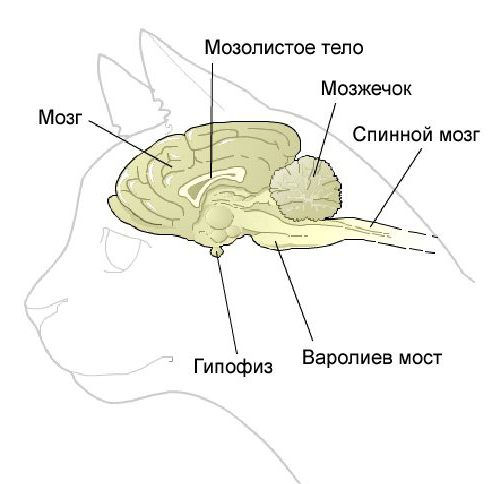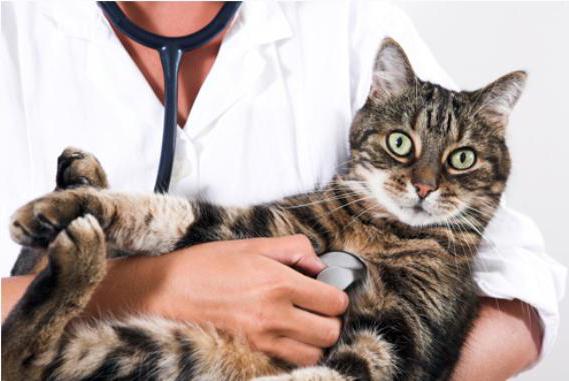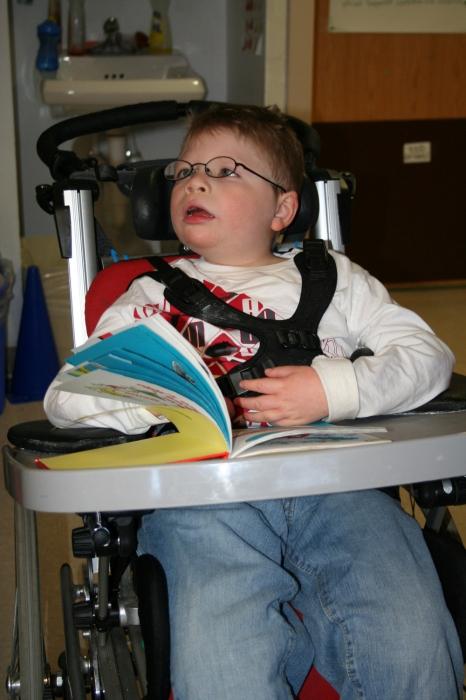Epilepsy in cats: causes, symptoms, treatment
Not every cat owner can affordto imagine that their pet, like some people, may be epileptic. Nevertheless, according to doctors, this ailment among representatives of felines has recently been encountered more and more often. At the same time, many people pay attention to the strange behavior of their "fuzzy", but they can not explain it. It does not occur to them that the animal suffers from such a terrible disease.

In this article, we'll talk about how epilepsy looks in cats. Symptoms, treatment and prevention of this disease also will not be left without attention.
What is epilepsy?
Immediately it should be said that this disease is notis contagious. The reasons for its occurrence can be very diverse. Often, noticing the strange behavior of a cat, the owner may think that the animal is fooling around, and do not attach any importance to it. And in vain ...
Epilepsy in cats (symptoms, treatment, weconsider below) is a special brain disorder that can be recognized by convulsions and convulsions that last a short time. Such a disease can occur not only in cats, it is also susceptible to other animals, and, of course, people. Sometimes the disease is caused by disorders in the brain, and sometimes there are other causes.
As a rule, the diagnosis of "epilepsy" is made when the seizures and convulsions are repeated with this or that regularity.
The terms
To better understand the essence of the disease, let's define some of the terms that accompany it:
- prolonged phase Is a period when anxiety and some nervousness appear in the animal's behavior; the cat has an irresistible need for movement, and it begins to run uncontrollably around the house;
- postictal phase Time after seizures; during this period the cat canbe drowsy, show signs of depression; may also be troubled by attacks of "wolf" appetite, a certain excitement; this phase can last from 24 to 48 hours;
- attack - convulsions themselves; jerking of limbs, convulsions, loss of control over the physiological functions of the body, strong deflection in the spine; this state usually lasts 1-3 minutes;
- partial seizure - covers not the entire body, but only some muscle groups; can manifest itself in the form of uncontrolled aggression, attempts to bite a non-existent object, tremor of the tail or paws.

Types of disease
First of all, you need to understand what kind of epilepsy is in cats, the treatment will depend on it. Experts share all attacks on two main types:
- real;
- false.
In the language of medicine, they are called a little different: idiopathic and symptomatic.
The present epilepsy is rather complicated indiagnosis, determine the true cause is very difficult. Many doctors are inclined to believe that genetic anomalies of the brain or birth trauma in kittens are to blame. The disease manifests itself already at the earliest age, practically does not give in to treatment, pursues the cat all life, and with time the duration and severity of seizures increases. The treatment of this epilepsy is very long and complicated. In some particularly difficult cases, to stop the suffering of the animal, even offer him to put to sleep.
In contrast to the previous version, the falseepilepsy is of an acquired nature. In this case, the symptoms are most often the result of other diseases or head trauma. And from the time of injury to the appearance of the first signs can take quite a long time, the owners may not even suspect that their cat is in danger.
Symptoms
What does epilepsy look like in cats? Symptoms of this disease are rather eloquent. Most often, the harbinger of an attack is complete immobility. The animal seems to freeze, the view rushes to one point, there is a loss of orientation, the cat does not react to external stimuli.
When the attack begins, the animal falls andbegins to twitch in a fit, wriggle and arched back. There are convulsions, numbness of the body, partial stopping of breathing is possible, legs are stretched. During an attack, involuntary emptying of the intestine or bladder may occur, the cat no longer controls these processes. The jaws of the animal are constantly moving, as if something is chewing, and the paws are twitching, depicting a run. From the mouth of the animal can go white foam. If it is not white, but pink - it means that your pet has hurt his tongue or cheeks and his blood is bleeding.

This condition can last from severalseconds to several minutes. After the attack, the cat becomes apathetic, breathes heavily and for a long time comes to itself. Sometimes after an attack, the animal may lose sight and hearing for several hours.
Causes
Why does epilepsy occur in cats? The reasons can be very diverse. As already mentioned, epilepsy can be a symptom of some other diseases, as well as being congenital, caused by genetic changes.
Establish the causes of the disease and help the animalyourself is not possible. It is important timely advice specialist. If you contact the vet in time, you can establish the cause of the disease and ease the condition of the animal.
In order to correctly diagnose the sourceyou need to pass some tests and make special tests. If it turns out that epilepsy is false, then you need to treat the underlying disease, seizures will eventually go by themselves. It is more difficult, when idiopathic epilepsy is diagnosed - here the animal will need constant care and the help of the owner throughout all life.
Diagnostics
Even if you know how to treat epilepsycats, this does not mean that you can do it yourself. To correctly diagnose, it is not enough to just see the attack and understand that it fits the picture described above. Everything is much more complicated here. To make sure that the diagnosis is correct, the doctor should appoint your pet blood biochemistry, ultrasound of the abdominal organs, MRI or computed tomography, EEG, chest X-ray.

Only by obtaining the maximumnumber of studies, and also after hearing your detailed description, and better seeing the video of the attack, the doctor can understand the true cause of the disease and prescribe an adequate treatment.
Which cats are predisposed to epilepsy
Many "koshkovladeltsy" would like to know, depends onwhether epilepsy in cats from the breed of the animal or any other characteristics. To date, there has been no fixed relationship between animal breed and disease frequency. But the connection between epilepsy and the animal's sex is. It is established that cats suffer from this terrible disease more often than cats.
If the disease is innate, thenthe first seizures usually occur during the period of puberty of the animal. If epilepsy is false, then it is very difficult to establish any temporary connection. Although epilepsy is inherited, it does not always happen from mother to child. Sometimes the disease manifests itself in the second, and even in the third generation. Therefore, if you are breeding cats, then regardless of the form of the disease, the animal should be excluded from the "tribe".
When to start treatment
To start treatment correctly and on time, it is necessary to count and fix epileptic seizures in cats. Treatment depends on how often they happen.
If epileptic seizures in your petoccur not more often than once or twice a year, while the animal does not suffer from any concomitant disease, then treatment should not be prescribed. Your task - to carefully monitor the pet and try to reduce the risk of injury to a minimum limit.

If epileptic seizures are repeated once inmonth and more often, the animal needs treatment with special anticonvulsants. Do not forget that appoint only a doctor. Improperly selected medication will cause an increase in the severity and duration of seizures. Accurate observance of the doctor's recommendations, proper care will reduce the frequency of seizures and ease the condition of the animal.
Advices of a neurologist
Epilepsy in cats - the disease is not well studied. However, you can help the doctor determine the type of the disease correctly. To help the doctor, try to think in advance answers to such questions:
- When did the first attack occur and when did they become more frequent and stronger?
- What is the frequency of seizures?
- Are they spontaneous (disorderly) or regular?
- Have you noticed the connection between seizure and feeding, sleep, excitement or other events?
- Are there any other symptoms: increased thirst, poor appetite, or others?
- Did you give the animal any nutritional supplements, medicines?
- Have there been cases of falling from a height, other injuries?
- Did not poisoning or contact with poisons happen?
Answers to these and some other questions will help the doctor correctly identify the etiology of the disease and prescribe adequate treatment.
Epilepsy in cats: treatment, drugs
As already mentioned, treat directlyEpilepsy is necessary only in the case when it is a primary disease. If it is false, then first of all you need a basic illness, while attacks are likely to pass by themselves.

So, epilepsy in cats is a cure. How to stop seizures and relieve the condition of the animal? For the treatment of primary epilepsy, such drugs are often used:
- "Pregabalin";
- "Phenobarbital";
- "Gabapentin";
- "Levetiracetam";
- "Zonisamid" and others.
Here it is necessary to say that most often treatmentis lifelong and is strictly controlled by a doctor. Even if the seizures have not been repeated for a long time and it seems to you that the animal is completely healthy, do not stop giving pills at all. Such actions can cause "withdrawal attacks".
Treatment is considered successful if the frequency of seizures in an animal has decreased at least twice, and the side effects are minimal or absent altogether.
It is very important during the treatment to conduct a speciala diary where to describe in detail all the seizures that occurred: the number, time, duration, severity, how the seizure occurred, whether there were convulsions, stopping breathing, and so on. Such records greatly help to correct the treatment. If the treatment does not bring positive results, it must be corrected. It is possible that the wrong doses of the drug are used, or the animal's organism has been resistant to the action of a particular antiepileptic drug.
If seizures in the animal were absent for a year, the doctor can start the drug cancellation, gradually reducing its dosage. Sharply throw the treatment is not possible - epilepsy can return.
Does the illness of a pet's life threaten
In time and correctly diagnosed epilepsy in cats, correctly selected treatment and adequate care is a guarantee that the disease will not bring irreversible harm.
The danger to the life of the animal comes in thethe case when the status epilepticus is diagnosed. This is a long series of seizures, in the intervals between which the cat loses consciousness. It is very important to immediately take the animal to the doctor. Each such attack is fraught with severe brain damage, fatal heart attacks and asphyxia (suffocation).
If epilepsy in cats is a symptomanother disease, such as brain cancer, it all depends on how the latter affects the animal's body. Here the life of a pet depends on the complexity of the underlying disease and its stage.

What to do to the owner
The success of the treatment and the safety of the animal largely depends on what kind of help the host provides. To facilitate an attack of epilepsy in cats, you need:
- carefully observe the behavior of the pet; with an apparent approach of seizure, it is necessary to transfer the cat to the floor in a warm room and to dim the light;
- the hand needs to be raised slightly and hold the animal's head, so that the cat does not beat it against the floor;
- Do not need to specifically open the jaw, if the animal does not choke;
- if you saw foam from the mouth, insert the tip of a teaspoon between the front canines and carefully hold it there so that the animal does not bite off its tongue;
- In no case should you put your fingers in the mouth of an animal, catch a tongue and try to pull it out; If the cat lies on a flat surface, the tongue does not fall and it can not suffocate;
- You can not also press the animal to the floor or to your body - it fetters the movements of the animal and intensifies the attack;
- set up a special notebook and write down all the nuances of each attack;
- at least once a year, conduct a complete examination of the animal;
- feed the cat only with food specifically designed for animal-epileptics;
- try to protect the animal from stress, do not beat it and do not shout, even if the cat is guilty.
Prophylaxis of epilepsy
Of course, preventive measures will not have any effect on genetic epilepsy, because the disease is from birth. But you can try to prevent symptomatic epilepsy.

- regularly take blood tests, urine tests;
- monitor blood sugar, check kidneys and liver;
- avoid colds and infectious diseases;
- Avoid possible contacts with toxic substances, toxins;
- avoid overheating or hypothermia of the animal;
- Do not allow injuries, jumps or falls from a high altitude, for example from a closet or balcony;
- Do not zealous with the use of various biological supplements not prescribed by the doctor;
- give any drugs, including pills from worms, only as directed by the veterinarian. </ ul </ p>







